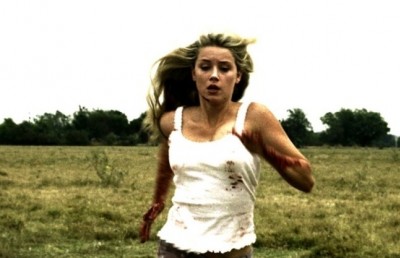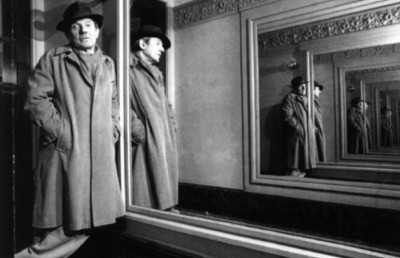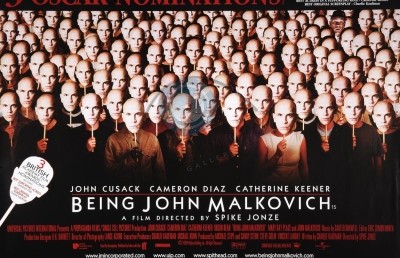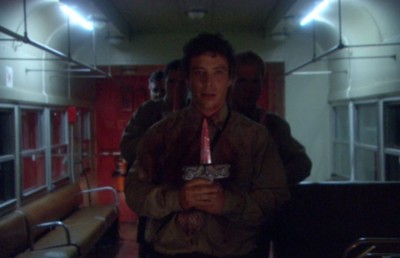Existence is Song: The Dream-like Aesthetics of Duration in Mirror
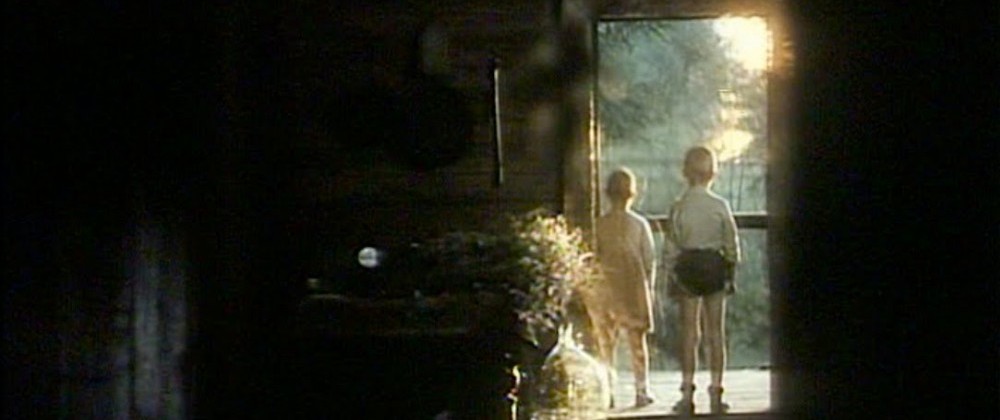
There has been an inseparable connection between film theory and film-making in the history of Soviet cinema, with a shared objective driving them both. Filtering down through Eisenstein and Kuleshov, the essence of cinema has become the holy grail for the Soviet film theorist, and Andrei Tarkovsky’s meditations on the art form prove to be no exception. But as far Tarkovsky’s philosophical grounding of the medium reflects his Soviet heritage, a single viewing of any one of his films would be sufficient to see that Tarkovsky’s films are vastly different from those of Eisenstein or Pudovkin. For the earlier theorists, the distilled essence of cinema lay in montage, but for Tarkovsky this is not so. In his book, Sculpting in Time, Tarkovsky refutes his predecessors’ predilection for editing as presupposing the most basic ontological element of cinema: its ability to capture existence, and therefore time. The time which captivates and precedes Tarkovsky’s aesthetics is not the physical, linear time which can be recorded by a watch, or contained within any mechanism of measurement. This time is spatialized and abstract, and hence a creation of the human intellect. Tarkovsky’s temporality is instead durational, in the same manner as time conceived by Henri Bergson, innate to the human spirit, and his film form follows in likeness. This parallel between film theory and form emerges prominently in his most personal film, Mirror (1975), wherein Tarkovsky achieves a dream-like aesthetic through an adherence to his theory of time both in the narrative and aesthetic composition of the film.
In an effort to penetrate Tarkovsky’s use of time as the ontological centre of cinema, it is necessary to understand that, for him, time is first and foremost a precondition for the human spirit. Consciousness is bound to the corporeal, and thus to physical time, but consciousness also realizes itself through memory, which is a consequence of time in the knowing mind. This introduces a new dimension of temporality distinct from the abstract condition of what can be measured, and it can only be quantified by the progression of objects in space. However, even this form of spatial time depends upon the existence of a real time, one which exists inseparably within the psyche. Without the ability to remember, the evolution of objects in space would become impenetrable by the human mind, and there would be no change recorded because there would be no detectable flux: our minds would register only one static state without extension either into the past or present. Tarkovsky refers to such a person as “the prisoner of an illusory existence; falling out of time he is unable to seize his own link with the outside world – in other words he is doomed to madness” (Tarkovsky 57-58). But time does not behave as such in the human consciousness; it is imprinted onto our memories and is thus realized in the soul. Therefore time and memory are interrelated concepts “like the two sides of a medal” (Tarkovsky 57).
The impossibility of memory-less existence is prevalent in Bergson’s writings as well. He divides consciousness into three mental processes: “pure memory, memory-image, and perception,” and perception, the immediate encounter with external reality, “is never a mere contact of the mind with the object present; it is impregnated with memory-images which complete it” (Bergson 170). Speaking of the present moment in distinction from its other two counterparts, Bergson defines it as “in its essence, sensori-motor” (177), but that is to presume that perception exists independently of its memory processes, which is an impossibility for the philosopher. Rather, time and memory are indivisible from one another, just as in Tarkovsky’s perception of temporality. For Bergson, “the whole of our past psychical life conditions our present state” (191), wherein our recollections are constantly present and contiguous to the influx of stimulus, is swept into the past and participates as memory. In essence, pure perception constitutes very little of our consciousness, as the present moment transpires in a flash and recedes into memory, where it exists more prominently and for a longer moment. Understanding this, we can appreciate the roots of Tarkovsky’s statement that “the present slips and vanishes like sand between the fingers, acquiring material weight only in its recollection” (58).
In Mirror a fundamental example of the gravity of memory can be found in the stock footage of the Soviets crossing Lake Sivash (56:34 – 1:00:07). This sequence is inarguably not a literal memory of the narrator, whom we know was only a child when this death march occurred, and it is also not an assured dream, because it is actual documented footage that Tarkovsky found and did not film himself (Totaro 24). Because the images are historic, they naturally find themselves within the scope of time, yet Tarkovsky states very blatantly that “History is still not Time” (57). The sequence finds itself in a pre-existing state of time native to the narrator, but remains ontologically vague. In a very factual sense, this footage is a highly detailed memory of a past perception, but it is assembled and edited together by an outside source in accord with his own inner experience of it. The footage itself does not reveal the tragedy which it describes unless it is perceived by an audience already familiar with the disastrous event, in which case such a spectator would be bringing their own memories of the scene to flesh out the sensory-motor stimulus presented.
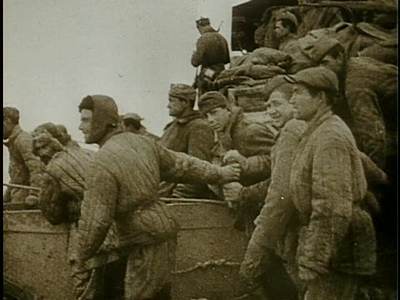
In truth, even with prior knowledge of what is being shown, the sequence has no purely logical function or historical signification within the context of the film. No matter how one tries to organize the scene in conjunction with the rest of the film, what we are left with is solely an experience of time itself. The natural flux of time is suppressed through the use of slow-motion which clashes against the real-time of the soundtrack, obviously added after the fact. The most haunting aspect of the sequence is in the interplay between the audio-visual component and the poetry recited over it by the narrator, which was written by Tarkovsky’s father prior to the conception of the film, as stated in the opening credits. The premise of the poem is the predetermined nature of time, and thus the immortality of the present: “All are immortal, Everything’s immortal” (58:56 – 58: 59). The visuals portray the event as labouring and arduous, yet the poetry and atmospheric music give it a sombre and tragic tone, which the event was in retrospect. It is this retrospective tone which guides the “rhythmic pressure” of the affair, and the “document is transformed into a subjective vision … experienced both as a distressing and nostalgic vision of history” (Petric 28).
The lack of historical signification in the sequence incites the crucial division between Tarkovsky’s ideal of poetic cinema and the conventional “poetic cinema” which he rejects. The essential flaw of this “modern ‘poetic cinema’” for Tarkovsky is that it “involves breaking off contact with fact and with time realism, and makes for preciousness and affectation” (Tarkovsky 69). He examines Eisenstein’s Ivan the Terrible in order to highlight this breaking with time realism, concluding that the film is merely an encrypted chain of symbols and hieroglyphs (67), but most importantly is the fact that it comes “so close to the theatre (musical theatre), that it almost ceases … to be a cinematic work” (67-68). Films such as this make use of codified abstractions to the point that they completely distance themselves from the lived experience and become merely equations of ideologies, and are therefore closer to science than poetry. These ‘scientific’ constructions stir similarities to Bergson’s spatialized time, one that is “conceptualized, abstracted and divided” (Totaro 25), and follows this mode of segmented temporality in favour of the real time which flows through conscious existence. For Tarkovsky this represents a misinterpretation of the pure essence of time in cinema and cannot be considered true poetic cinema.
In the wake of this departure from conventional filmic poetics, Tarkovsky’s films are constructed along lines faithful to “the reality of the artist’s inner life” (Petric 28), and accomplish this through the use of the long take and methodic camera movements. These techniques are not new to film theory and reflect André Bazin’s defense of cinematic realism, which is pertinent to Tarkovsky’s ideal cinema. However, when he proclaims that “by its very nature cinema must expose reality, not cloud it” (Tarkovsky 72), he is not discussing the same reality as Bazin. Tarkovsky’s film theory embraces both the realistic forms of external reality as well as the interior processes of the artist relaying it. Thus dreams, memories, fantasies and hallucinations, planes of consciousness distinct to the soul, are integrated into the fabric of temporal existence in accordance with their appearance in reality. But this is not to say that the kinematics of the camera are reserved solely for the purpose of recreating dreams. Confronting the enigma of oneiric experience cinematically, Tarkovsky sees that “the dreams on the screen are made up of exactly these same observed, natural forms of life” (Tarkovsky 71). Therefore scenes of memory and experience are composed with similarly dream-like qualities of time-pressure and fluid camera movements.
Take for example the scene immediately following the first blatant dream sequence of Mirror where Alexei’s mother calls him and he mentions his dream (19:11 – 21:24). The dialogue occurs over a long, meditative camera movement consisting of first a (left to right) pan, and then a steady tracking shot down the hallway. The fluidity of the moving camera defies simple description in technical terms, it is neither simply a pan, nor is it simply forward tracking. Already Tarkovsky’s technique is irreducible to abstractions of technical camera movement. But what distinguishes this scene most is its obscure point-of-view. Alexei is speaking on a phone, which we know is attached to the wall by a cord (49:21) when Ignat speaks to him on it, yet the camera movement is not chained to this perspective. It freely explores the space of the scene from a perspective detached from Alexei’s physical eyes, and there are indeed scenes later which utilize subjective point-of-view more explicitly, particularly when Natalya looks directly at the camera in the reflection of the mirror (33:30). The ambiguous camera movement preceding, however, takes on a “phenomenological obliqueness” (Petric 29), and though the spectator feels as if they are in the present moment, they are rather navigating through the space as if in a dream state.
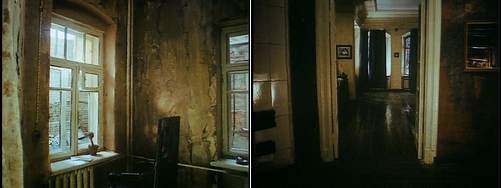
The obscurity of Tarkovsky’s imagery does not reject rational interpretation out of obstinacy, but as a result of the bilateral motion of memory through time as detailed by Bergson. According to the philosopher, memory moves in two ways: forward with the current of time, but also regressively upon itself, and in essence multiplying infinitely. He determines this second motion to be “more personal when [memory] widens out, and thus they enter into an unlimited number of different ‘systematizations’” (Bergson 220). Considering the autobiographical structure of Mirror, it’s permissible to assign this rotational motion of thought to the imagery which “reflects … the rhythmic pulsation concealed beneath the outside appearance of reality, provoking a strong emotional response, as well as contemplation” (Petric 29). His metaphors resist psychoanalytical or logical analysis because both epistemologies presuppose each element to have a finite and self-contained significance. In spite of this, the continuously coalescing memories have no predetermined identity, but an infinite series of potentialities. In this respect Petric is quite right that Tarkovsky’s imagery reflects contemplation in both the director and audience, rather than fabrication and deciphering.
This alternate direction of consciousness explains the oneiric texture of Tarkovsky’s camera movement even when removed from pure dream or certain recollection, but does not reveal the architecture of his outright dreamscapes. The most direct reveries in Mirror contain slow-motion and monochromatic film, but these alone are not indicators of dreaming. Slow motion and black and white film stock appear in other, less distinctly dream sequences, such as when Marousia storms down the hallway of the printing press (31:34 – 31:54), and so present another example of converging dream-like aesthetic techniques, but not an absolute comprehension. Tarkovsky disdains these codified effects as “borrowing effects from theatre” (72), and hence not purely cinematic. It is instead in the logic of the dream images that they reveal themselves as necessarily dreams and nothing else.
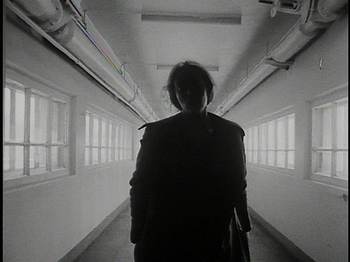
The first forthright dream sequence of the film is exemplary of this dream logic, which remains contained in the rhythmic pressure of the long take (17:00 – 19:10). The use of time pressure here not only illustrates the emotional undercurrents of the scene, but also severs its attachment from general physical laws. Movement, whether it is human or natural (plaster and rain falling from the ceiling), is slowed and gravity is “estranged,” no longer a reality but merely an impression thereof. This is amplified by the real-time of the sound, similar to its appearance in the Lake Sivash scene. This sequence uses the characteristic features of dreams as outlined by Petric explicitly: “bizarreness of the situation, strong physical motion, obfuscated peripheral vision, … spatial-temporal discontinuity, …decelerated motion” (Petric 29) all occur here to alienate the sequence from any realistic interpretation. This severance from external reality reflects Bergson’s view of the dream plane, where “consciousness which, detached from action, should thus keep in view the totality of its past, [and] would have no reason to dwell upon one part of this past rather than upon another” (Bergson 218). This freewheeling association of memories unbound to perception is evident in the location of the dream. It begins in the cottage of the earlier memory, but then moves to an apartment building resembling the one Alexei lives in later in life, with its high ceiling and ornate trim. “Obfuscated peripheral vision” plays a central role in the beginning of the shot as the camera tracks in tight upon Marousia soaking her hair in a sink, and then as it pulls back the sink has disappeared within the duration of the long take. This defies standard logic, yet registers emotionally in the audience as if they were themselves experiencing the dream. The logic contained within the shot doesn’t conform to standard systems of interpreting symbolism because this dream state consists of pure memory: there is no concise definition for each image. The direction of thought in such a sequence proceeds expressly in Bergson’s rotational motion, and as such is more susceptible to “the actual experiencing of the oneiric mood generated by particular cinematic devices and their relation to the thematic aspect of the sequence” (Petric 29), than to arithmetical interpretation.
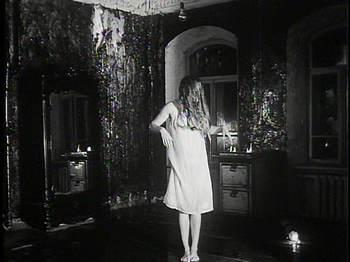
When one contemplates the autobiographical nature of the images in Mirror as well as Tarkovsky’s eventual death along similar circumstances to his protagonist, this film acquires an eerie sense. Tarkovsky both remembers his childhood and dreams of his death through the medium of film, which by its very ontology distinguishes itself as the only art form capable of reproducing the inner world of the artist. His theories of film form as well as his philosophies of the conscious soul come together to create a film pulsing with life. This vivacity prevalent throughout his cinematic works is the direct consequence of the detailed interpretation of his own inner time, and as such has carved himself a revered position in the history of both film-making and film theory. Though he said himself that “the moment of death is also the death of individual time” (57), his films have merged the spatialized time which permits the mechanism of cinema with his own individual time to form an enduring dreamscape into his interior time.
Works Cited
Bergson, Henri. Matter and Memory. Trans. Nancy Margaret Paul and W. Scott Palmer. London: George Allen & Unwin Ltd, 1950.
Tarkovsky, Andrei. Sculpting in Time: Reflections on the Cinema. Trans. Kitty-Hunter Blair. London: Bodley Head Ltd, 1986.
Petric, Vlada.“Tarkovsky’s Dream Imagery.” Film Quarterly v. 43. n. 2 (Winter 1989/90): 28-34
Totaro, Donato. “Time and the Film Aesthetics of Andrei Tarkovsky.” Canadian Journal of Film Studies v. 2. n. 1. (1992): 21-30


